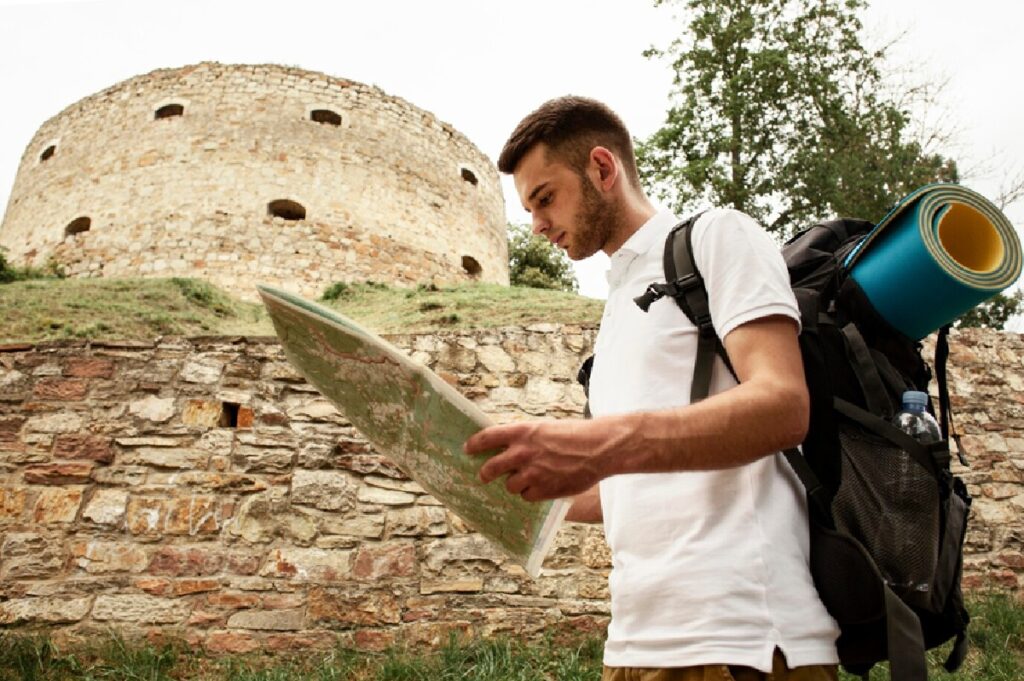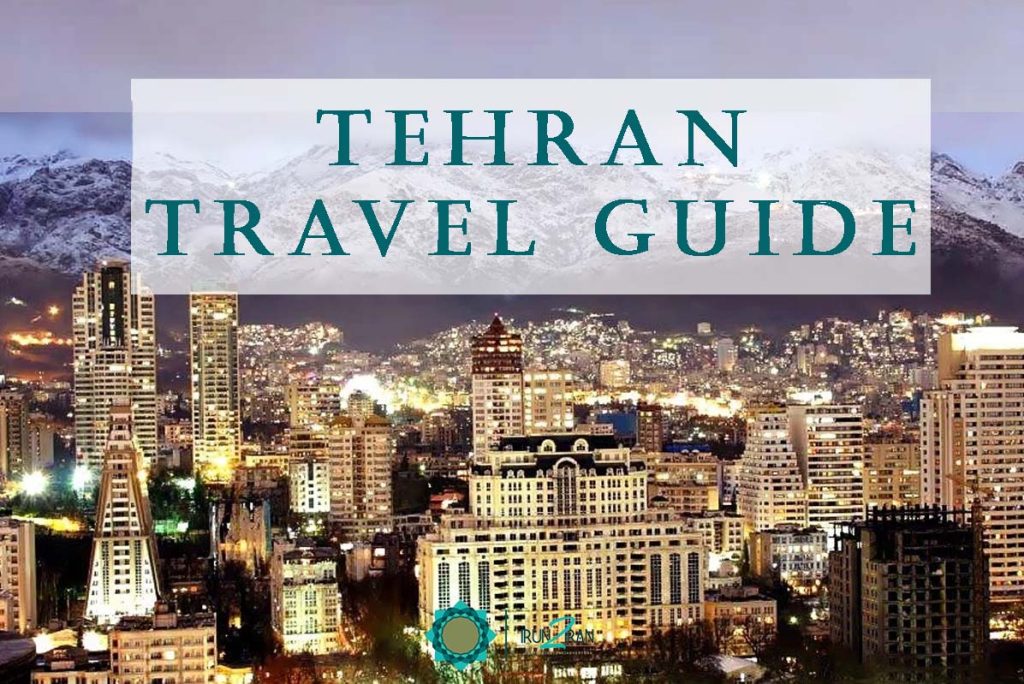The Sa’dabad Palace Complex, situated in the Alborz foothills of Tehran, is a 110-hectare public museum that exhibits Iran’s royal history, featuring eighteen palaces that have been turned into museums that display precious relics depicting Iranian royalty. The museum and tranquil gardens are ideal for those interested in art or nature, along history.
Our guide will talk about Sa’dabad’s history with important palaces along with some gardens. It also includes travel tips and mentions nearby hotspots like Darband or Tajrish bazaar.
A Royal History: From Qajar Retreat to Pahlavi Grandeur
Qajar origins (19th Century)
In the 19th century’s earlier days, Qajar princes would utilize what is now known as Sa’dabad Palace as a summer retreat. It was a palace around the size of eight thousand square meters located in the newly emerging Shemiran region that used to serve as a cool escape from the city heat during summers.
The pavilion of Ahmad Shah bears his name and that of his predecessors and consists of marvelous arches and tiled courtyards that reflect artistic plainness of the Qajari era as well as their obsession with tranquil retreats within the glorious nature.
The Pahlavi Transformation (20th Century)
Sa’dabad, a royal estate under the Pahlavi dynasty, was expanded by Reza Shah Pahlavi in the 1920s, constructing the Green Palace and the White Palace. His son, Mohammad Reza Pahlavi, later modernized the palace in the 1970s, transforming it into the royal family’s summer residence.
The Pahlavi rule introduced European architectural styles such as neoclassical columns and ornate interiors with influences of the Persian designs. Sa’dabad was known to host large royal state ceremonies, showing how fast Iran became modernized.
Post-Revolution: A Cultural Legacy
The multicultural background of Iran is presented in Sa’dabad, which appeared to be the royal palace after the Islamic Revolution and has been turned into a public museum complex since that time. The palaces were converted to museums under the Iranian Cultural Heritage Organization, where evidence of a network of trade across the Indian Ocean and ancient technologies is presented.
Complex Scope
The great Sa’dabad complex covers 180 hectares of private gardens, forests, and waters, and comprises 110 hectares with 18 different palaces. It is named after the members of the Pahlavi family; it has wind towers, greenhouses and pathways. The most beautiful museum in Iran and probably in the whole country is also located at the base of Tochal Mountain, the most identified cultural site in Tehran.
Exploring the Palaces: Highlights You Shouldn’t Miss
The remarkable qualities are as follows:
The White Palace (Mellat Palace Museum)
Construction of the White Palace, also called Mellat Palace Museum, took place between 1931 and 1936. It was the summer house of Mohammad Reza Pahlavi and Queen Farah Diba. The palace was the diplomatic center of the Pahlavi court and was the location of such events as the 1978 state dinner in honor of U.S. President Jimmy Carter. The historical importance of the palace was its role as a royal residence and an international political theater.
Architecture Style and Grandeur
With its 5,000 square meters, the White Palace in Sa’dabad forms a huge building, consisting of 54 rooms and 10 large ceremonial halls. Its white marble facade and gold Roman-style columns make it majestic. The interior features crystal chandeliers, Persian carpets, and European-inspired furnishings, symbolizing the Pahlavi dynasty’s modernity while respecting Persian history.
Notable Features
Persian Carpets from Persia from workshops like Amoughli in Mashhad, covering entire exhibition halls. At the museum exists Iranian paintings, European paintings and royal furnishings which remind us of the Pahlavi golden age. The Arts of Nations Museum, under her direction, features artworks from around the world, including African sculptures and Asian ceramics, adding a cosmopolitan dimension to the palace collection.
The Green Palace (Shahvand Palace)
The now Green Palace was built in 1923-1929 as a personal retreat of Reza Shah (then Shahvand Palace). As the first major Pahlavi-era palace, it serves as a landmark for Mohammad Reza’s vision for a modern royal estate, fusing Qajar-era craftsmanship with modernist design. Its small, intimate scale offers a more personal view into Reza Shah’s life and stands in contrast to the high palace’s imposing nature.
Unique Green Marble Façade
Its spectacular green marble exterior, obtained in Zanjan province, makes the palace the “Marble Palace.” It has a classical Persian design, and that is why it is one of the most visually attractive palaces in Iran due to its exquisite arches and columns. The reflective walls of the facade are polished in various color tones, making them more beautiful in sunlight.
Exquisite Interior
The Green Palace is also filled with the marvel of its mirror hall, with a handwoven carpet of 70 square in meters and complex mirror mosaics with a shining effect. The historic furniture and plasterwork done by the master artisans show Qajar aesthetics updated to Pahlavi-era tastes. The close quarters of the palace, which are decorated with silk curtains and old-fashioned chandeliers, make us feel a sense of elegance that is ageless.
Other Notable Palaces/Museums to Consider
Here other museums that are worth considering:
Black Palace- Museum of Fine Arts: located in a former royal court, it holds paintings of the 17th-20th centuries in European categories, by such European artists as Salvador Dali and an Iranian collection, and by such artists as Sohrab Sepehri and Hossein Behzad.
Royal Clothing Museum (Shams Palace): An exhibit of Pahlavi garments, including the wedding dress of Farah Diba, as well as coronating robes.
Omidvar Brothers Museum: (The building was constructed in the Qajar era) This gallery houses artifacts collected by the Omidvar brothers on their world travels: gorilla skulls, tribal masks and so on, saluting the first world tourists of Iran.
Royal Dishes Museum (Ashraf Palace): The museum shows the luxuries of meals and dishes of the past, created of porcelain with golden edging, and silver and crystal table set.
Military Museum (Shahram Palace): It contains Achaemenid modern military items such as swords, uniforms and cannons, which seems very attractive to any lover of their history.
The Water Museum: Illustrious ancient Iranian water lines such as qanats, reservoirs and the engineering brilliance that enabled the Persian people to survive.
Royal Cars Museum: This museum has luxury cars belonging to Pahlavi and has Rolls-Royce and Mercedes car models among them and the automobile enthusiasts get a deep interest in learning the use of those cars.
The Gardens and Natural Beauty of Sa’dabad Palace
We will now talk about the natural beauty in the complex’s area:
Lush Landscapes and Greenery
On the 180 hectares of gardens in Sa| appear ancient trees of sycamores are more than 100 years old, dense forests and artificial flora, which includes roses, tulips and fruit gardens. They are in the style of Persian garden which is built with green houses and are designed lawns and shade walkways to create a relaxing oasis. The gardens are yet another indication of the Iranian conventional liking of symmetry and communication with nature.
Water Features
Streams, pools and fountains served by qanats and the Jafarabad River provide the gardens with calmness. These features belonging to the garden design of Persians offer beauty as well as useful irrigation to maintain the greenery. The calm effect of the moving water contributes to the calm atmosphere.
A Serene Escape
The Sa’dabad complex is located in Shemiran and is an oasis of calm in the hustle and bustle of Tehran. The chirping of birds and rustling of leaves, coupled with tall trees, make going out and walking or meditating very relaxing. The gardens also provide the visitor to relax after participating in a tour of the palaces.
Seasonal Beauty
Spring and autumn are the best seasons to visit gardens, as they offer stunning blossoms, vibrant flowerbeds, and vibrant fall colors. Summer is laden with green and winter snow makes it more magical. The best time to enjoy and take photographs of gardens is during spring or autumn, when they are in full bloom.
Planning Your Visit to Sa’dabad
Here’s how to plan your visit to Sa’dabad:
Location and Address
Sa’dabad is located in the Shemiran region of north Tehran, in the foothills of Tochal Mountain. Here are the main entries:
- Darband Gate: Shahid Taheri St., Darband Square, Tajrish.
- Zafaraniyeh Gate: Shahid Falahi St., ValiAsr St., Tajrish.
Best Time to Visit
The best times to visit the gardens are October through November and December to February. Spring and autumn are mild and the gardens are spectacular. To avoid crowds, visit during the mornings (9 AM to noon) and stay away from weekends. Early arrivals ensure easy access to parking and shuttles.
Opening Hours and Days
Daily 9 AM to 6.45 PM (Last entry 5.30 PM) spring/summer; 8 AM to 5 PM (Last entry 3.30 PM) fall/winter. Contact us to get the closure on the main religious holidays such as Ashura or Eid al-Ghadir.
Ticket Information
A different ticket is needed to visit each palace/museum and costs around 50,000 tomans for foreigners (prices are subject to change). Plan to buy several tickets in case you are visiting several museums.
How Much Time to Allocate
It should take 2-4 h, depending on the visited palaces (3-5 is possible). The size of the complex also requires comfortable footwear to do a lot of walking around, more so, when wanting to visit the gardens.
Getting Around the Complex
The main mode of transportation is by walking, although there are shuttle modes on payment to traverse the distances between palaces. The vast corridors will require comfortable footwear and elderly or limited mobility visitors should be considered in terms of available shuttles.
How to Get to Sa’dabad
Here’s how to reach Sa’dabad:
By Metro
The closest station is Tajrish Station (Line 1), which is a 20-minute walk to Darband Gate through Shahid Taheri St., or 5 minutes by taxi. To reach Zafaraniyeh Gate, you may either walk along Valiasr St. to Shahid Falahi St., or take a taxi. As mentioned, metro fares are economical, however, walking will be necessary for part of the journey.
By Taxi/Ridesharing Apps
It would be easier to use a taxi or Snapp because this route is very convenient. Tell your driver to drop you off at either Darband Square or Zafaraniyeh Gate and you’re set. Ridesharing is best for those coming from busy parts of Tehran as it saves time regardless of traffic conditions.
By Public Bus
BRT Line 7 has a stop at Tajrish Square. Get off there and go on foot towards one of the gates, or take a taxi. There are not many direct bus services offering routes to Sa’dabad, therefore taxis and metro are likely more convenient options for most visitors.
Parking Information
Near Zafaraniyeh Gate, there is limited parking available which can quickly fill up especially during weekends and holidays so arriving during those times is advised. The parking situation near Darband Gate isn’t much better; hence drivers would prefer Zafaraniyeh instead.
Nearby Attractions to Combine with Your Visit
Check out other places as well while you’re at it:
Darband
There are hiking trails and traditional cafes just beside a river in Darband, which is north of Sa’dabad. You can take a taxi or walk from Darband gate to visit a teahouse or enjoy some kebabs or tea by the river.
Tajrish Bazaar
Tajrish has this famous bustling market that is filled with spices, trinkets, as well as fresh local cuisine like pomegranate juice. You can travel there using a subway train or by taxi. It is best if you are looking to indulge in shopping and experience the vibrant life of people.
Niavaran Palace Complex
A Shemiran-based Pahlavi-era royal dwelling added to Sa’dabad’s collection of history-themed sites, including Mohammad Reza Shah’s private library, Niavaran complements Sa’dabad, adding another must-visit palace for history lovers. It’s also about having a lie-in taxi ride to reach.
Tochal Complex
Close to Sa’dabad is tochal where unlike other places, offers skiing alongside its cable car ride, making this mountain beautiful all year round. It’s perfect for adrenaline junkies because activities skyrocket during winter season when ski resorts jam packed
Imamzadeh Saleh Shrine (Tajrish)
This shrine Tajrish bazaar brings over eye-catching tile work alongside incredible detailing while holding deep cultural importance.
It has a peaceful beauty in the courtyard around it and anyone can easily combine Sa’dabad, turning a half-day trip into two visits.
Conclusion
The Sa’dabad Palace Complex in Tehran presents the royal history of Iran, Iranian architectural arts and landscapes. It has expensive White and Green Palaces, art, fashion and ancient technology museums and huge gardens with centuries-old streams and trees.
Visitors can explore Pahlavi dynasty memoirs and Persian-style gardens. Combining this visit with Darband, Tajrish Bazaar, or Niavaran Palace for a full-day adventure in northern Tehran is recommended.
























